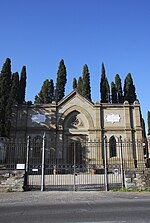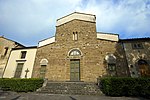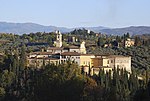Santa Maria della Neve al Portico
17th-century Roman Catholic church buildings in ItalyItaly Roman Catholic church stubsMonasteries in TuscanyRoman Catholic churches in Florence

Santa Maria della Neve al Portico is a Roman Catholic church and convent located on a rural site on Via del Podestà #86 in the suburban neighborhood of Galluzzo southeast of the urban center of Florence, Italy. It remains a monastery and is also known as the Convento Il Portico and now houses the Istituti Religiosi Femminili Suore Stimmatine.
Excerpt from the Wikipedia article Santa Maria della Neve al Portico (License: CC BY-SA 3.0, Authors, Images).Santa Maria della Neve al Portico
Via del Podestà, Florence Quartiere 3
Geographical coordinates (GPS) Address Nearby Places Show on map
Geographical coordinates (GPS)
| Latitude | Longitude |
|---|---|
| N 43.743889 ° | E 11.230397 ° |
Address
Via del Podestà 84/B
50124 Florence, Quartiere 3
Tuscany, Italy
Open on Google Maps









